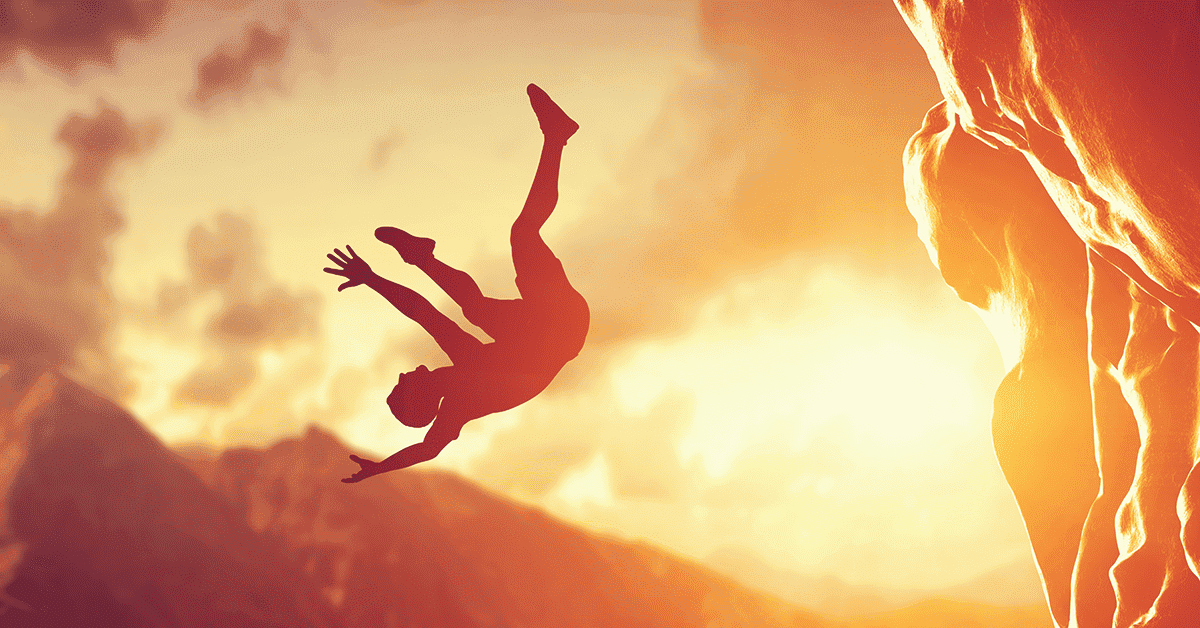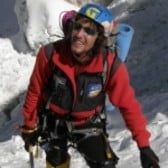
Sergey Kofanov
47 years, Australia
7 RULES TO PREVENT DEADLY RISKS WHILE CLIMBING

One study shows climbers have a higher chance of dying while driving to or from the climb than on the climb itself. Another study shows the data that pregnancies have a higher risk of death than climbing. Forget about it! All the statistics I have ever read do not support any of these statements. There is no documented data on the amount of time spent driving to and from a climb, nor time spent climbing. The only conclusion that can be made from the statistics is that more people die in car accidents than climbing accidents.
Jokes aside - climbing is a dangerous activity and I’m writing this essay in order to clearly state the dangers of climbing and mountaineering.
In general, if you want to get a credible comparison of climbing, car accidents, or pregnancy mortality rate, then I suggest you my approach. Look, I am now almost forty years old and for twenty years I have been climbing mountains. In that time, mountains have taken two of my friends and close acquaintances, each year. During the same time frame, only two of my friends died in a car accident, and no one died during pregnancy. You may say that I am the exception to the rule. I have talked to many climbers and alpinists that are close to me, and they all say I'm not the exception, but the rule!
From the very beginning of my mountaineering career to the present. I have been involved in a number of rescue operations. These rescue operations include me as a rescuer and sometimes by being rescued. The very first climb of my life ended up in me being rescued.
I am not a rescuer by trade, however there many cases in when I was involved directly or indirectly in rescue operations in the mountains. The most famous rescue operation that I took part in was the rescue of Marco Epis, an Italian climber, on Mount Everest at an altitude of 8,300 meters. That operation was completed safely, but, unfortunately, in my life there were times when the person I was rescuing died either in my hands, in front of me, from their injuries, or High Altitude Cerebral Edema.
The advice I give below is based on my experiences only, and have nothing to do with statistical calculations. I have personally had repeated close calls for each of the cases that I describe below. So now, I'm not ashamed to wear a helmet while climbing, or turn around if my shoes become wet, or like the look of the clouds on the horizon. It's better to look stupid and cowardly and stay alive, than to be self-assured and dead.
Let’s face it, climbing can be a trap if you let it take over your life. Here are seven simple rules to follow for preventing deadly risks and reducing accidents while climbing and mountaineering.
RULE #1. ALWAYS DO YOUR HOMEWORK
Find out in advance all the nuances of the route you are going to climb. This tip might look pretty obvious, but it applies not only to the ascent route, but also to the descent. You are required to do your homework and find out all the details of the descent route before you start your adventure. Ideally, the descent route should be on foot. If not, then don't go on the route until you learn where rappel anchors are located. Prior knowledge of a route, rappel anchors, and the walk-off descent route will prevent a large amount of rescues.
RULE #2. DO NOT EXCEED YOUR ABILITIES
Mountains do not have any vanity. Step by step, you need to prepare yourself from simple routes to more complex ones. Twenty years ago, no one imagined that someone could go to Mount Everest as their first climb, or with one year of experience. Unfortunately, the current industry of commercial guided tours, and Hollywood movies, mistakenly makes people believe guides can do anything. Guides can and do make mistake, the more complex the route and unprepared climbers, raises the possibility of mistakes. Do not force your guide to do unreasonable things for money. Not all people are honest and can fall for temptation.
RULE #3. LEARN HOW TO BE BETTER AT PLACING YOUR PROTECTION
I do not recall a single case where I would rip out the anchor when doing top rope climbs. But I can quickly recall a few close calls during the time of my passion for traditional climbing, because of mistakes while placing my protection. The best advice that I can offer here is practice. Train, climb long low traverses, learn how to find places for protection and pick up your gear on the first try, do not allow rope slings more than three meters even on the simplest routes.
RULE #4. USE ONLY ADEQUATE EQUIPMENT/ CLOTHING
Modern technology facilitates climbers lives greatly and reduces mistakes in choosing clothing and equipment. I understand that for many of you the value of your money is very important, but try not to skimp on buying equipment that may influence your health or life. A very large number of rescues could be avoided if climbers would wear a Light-Emitting Diode headlamp. My personal rule is always to have a headlamp with you no matter what!
RULE #5. DO NOT UNDERESTIMATE WEATHER
Weather is a very difficult factor to control (unless your name is Bruce Almighty) and can greatly affect the success of the ascent. Well-equipped Himalayan expeditions buy the forecast from Meteo France for hundreds of euros daily. You can also use local weather services, locals or forecast websites. Do not trust them 100%, because they can be wrong. Always have a plan B! Only serious analytical systems can predict the weather in the mountains because weather changes in base of the altitude, and the approaching front can be reflected from the slopes of the ridge in any direction. There are mountainous areas, where maybe one of three forecasts match the reality. The main advice is, if you feel insecure, then turn back. You can be sad for your whole life for giving up, but it's better than being DEAD.
RULE #6. NEVER CLIMB UNROPED OR ALONE
In most cases, people who climb difficult routes alone know exactly what they are doing. For example, Reinhold Messner accomplished most of his 8000m climbs alone, but no one dares to say he was wrong. The experience of Reinhold Messner, Simone Moro, Ueli Steck or Valery Babanov is more than enough for solo ascents, but their experience speaks for them. But the listed cases can't be compared with those cases of unprepared people watching enough Hollywood movies going alone on the Elbrus, Mont Blanc or Aconcagua. Alone, it is always harder to make decisions and adequately estimate situations. No one can help if you are alone, even in the case of a minor injury. If you do not have a climbing partner, then hire a guide. Personally, I do not hesitate to hire a local guide in those cases while approaching a new mountain region.
RULE #7. LEARN HOW TO BE BETTER IN YOUR BELAY AND RESCUE SKILLS
A lot of accidents in the mountains and on the rocks occur due to mistakes while belaying. And often the cases I have witnessed or participated in, could have been prevented, Better belay practices such as tying a stopper knot at the end of the rope or by wearing belay gloves. Sound too easy? Yet... more than half of the injuries are leg/ankle, head, or spine related. By knowing how to make a tire out of improvised materials (carpet, ice ax) and how to approach a spinal injury could save a large number of lives. Spend a little of your time to study this issue, and I wish you with all my heart to never use this knowledge.
BONUS. ALWAYS WEAR YOUR HELMET
If you think that wearing a helmet is stupid, then think again and ask the opinions of those that were hit by stones in the head while climbing. Yes, trekking routes do not require climbing skills, but often there is a risk to be hit by a stone from another group, located higher than yours. Those who have, at least once, made a night summit push in order to meet the dawn, understand exactly what I'm talking about.
There are so many ways to die early and everyone is free to choose from risky outdoor activities to smoking, but if you chose climbing, then always remember how short life can be.
Climb safe, climb smart and have fun!





